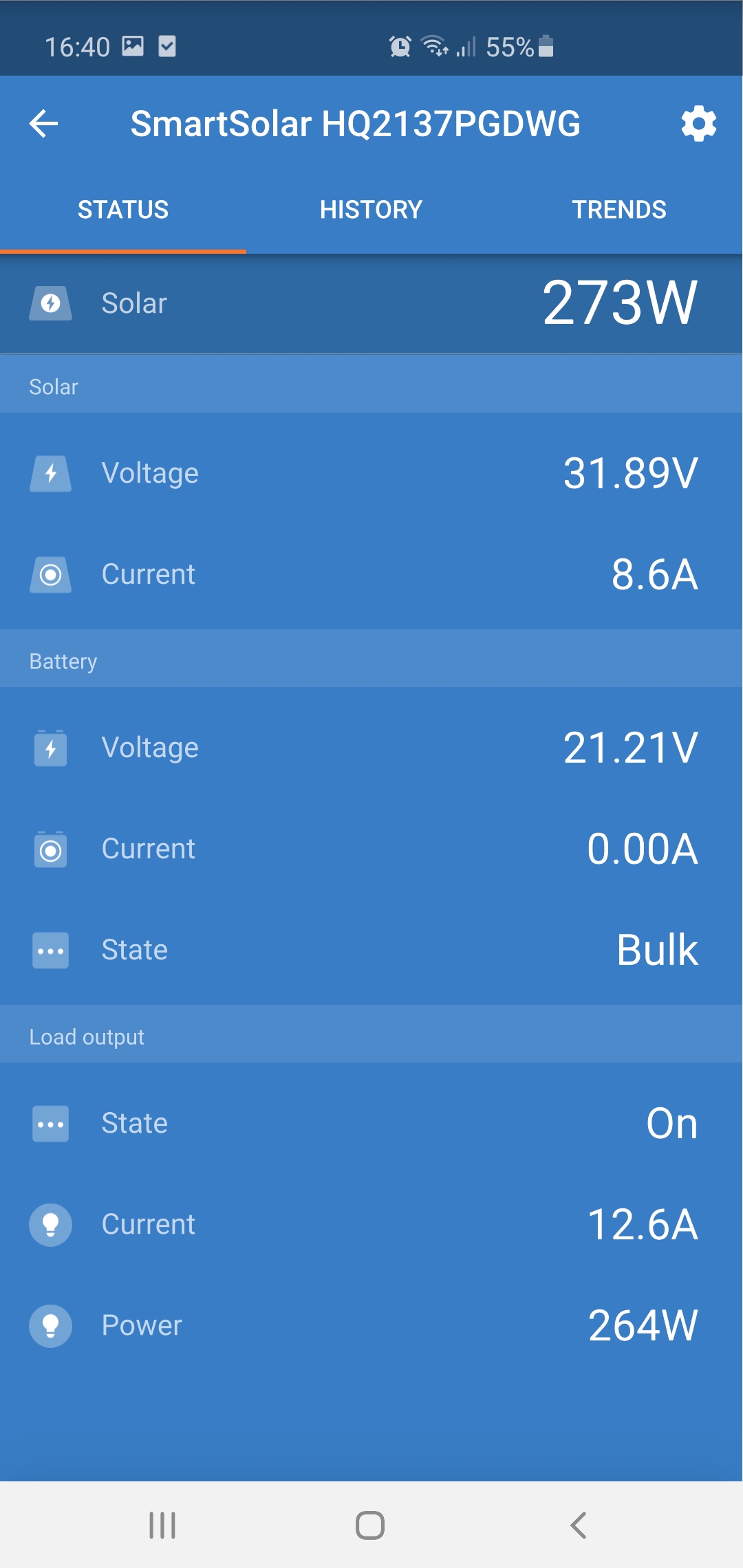Yesterday I have recieved my MPPT 75/15 SSC controller. Connected it to my 375w PV panel (open 41.6V), 24 V battery, all the systems was working well, I tested load output on my car phone charger, again, averything was going perfect, software controlls of load output was also working (on/off). Then I upgraded load with 600W inverter, after flipping a switch the inverter turned on, but in the app, load output status turned to off, with 0 amp/watt flow at the same time. BUT! The load was energized, and amps where flowing, inverter was working. At the same time PV power increased to 120w and the charging current on the battery by 5 amps (positive increase, allthou it should go with the minus sign). Obviously load output mosfet was blown.
So the questions are.
1.Why you say that load output is short circuit proof, quote "The load output is short circuit proof" Victron energy, smart solar charge controllers (MPPT 75/15), manual, if it is clearly NOT short circuit proof?
2.Why is firmware programmed to ignor load shunt input when the load output is software disabled (in reality working), and display makeup values instead reporting fault or just showing real situation, and also dangerously impact other values like battery charge current?


